Chapter: Mechanical : Engineering Thermodynamics : Properties of a Pure Substance and Steam Power Cycle
Gas Power / Air Standard Cycles
GAS POWER / AIR
STANDARD CYCLES.
For small power plants,
gas is ideally preferred as the working fluid. The gasoline engines, diesel
engines and gas turbines are common examples. The analysis of the air-standard
cycle is based on the assumptions that are far from real. In actual internal combustion
(IC) engines, chemical reaction occurs inside the engine cylinder as a result
of combustion of air-fuel mixture and. The IC engines are actually operated on
Open cycles in which the working fluid does not go through a cycle. The
accurate analysis of IC engine is very complicated. However, it is advantageous
to analyse the performance of an ideal closed cycle that closely approximates
the real cycle. One such approach is air-standard cycle, which is based on
certain assumptions. The assumptions for idealized air-standard cycles are:
1)
The working fluid, air, is assumed to be
an ideal gas. The equation of state is given by the equation pv = RT and the
specific heats are assumed to be constant.
2) All
processes that constitute the cycle are reversible.
3)
No chemical reaction occurs during the
cycle. Heat is supplied from a high temperature reservoir (instead of chemical
reaction) and some heat is rejected to the low temperature reservoir during the
cycle.
4) The
mass of air within the system remains constant throughout the cycle.
5) Heat losses from the
system to the atmosphere are assumed to be zero. In this we shall discuss about
the Brayton cycle, Otto cycle and Diesel cycle.
BRAYTON CYCLE
The Brayton cycle is
widely used as the basis for the operation of Gas turbine. A schematic diagram
of a simple gas turbine (open cycle) and the corresponding p-v and T-s diagrams
are shown below. Air is drawn from he atmosphere into compressor, where it is
compressed reversibly and adiabatically. The relative high pressure air is then
used in burning the fuel in the combustion chamber. The air-fuel ratio quite
high (about 60:1) to limit the temperature burnt gases entering the turbine.
The gases then expand isentropically in the turbine. A portion of the work
obtained from the turbine is utilised to drive the compressor and the auxiliary
drive and the rest of the power output is the net power of the gas turbine
plant.
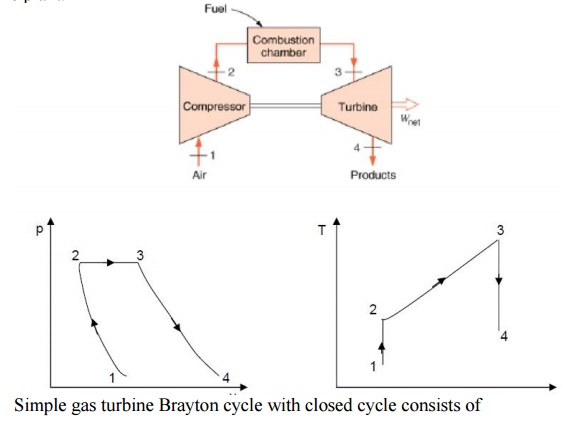
Simple gas turbine
Brayton cycle with closed cycle consists of
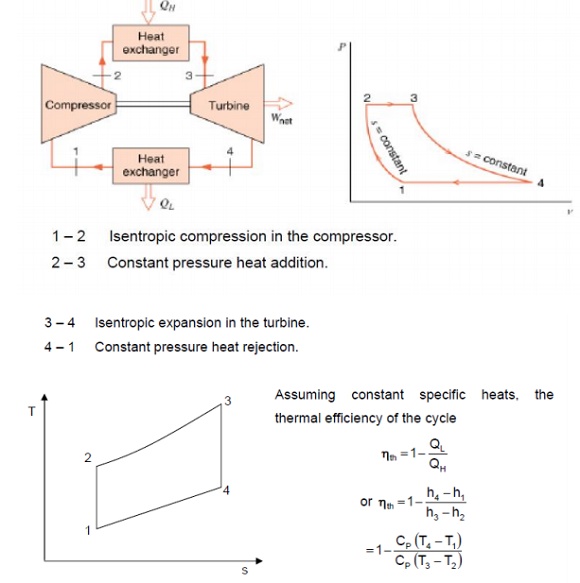
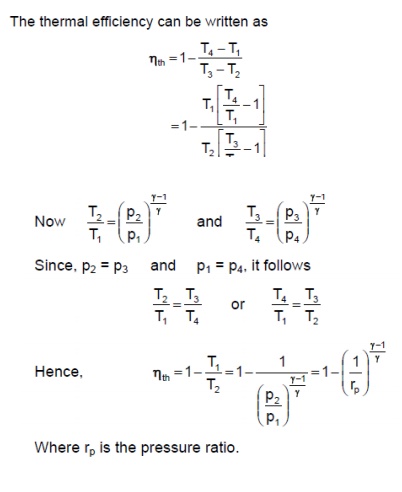

RANKINE CYCLE

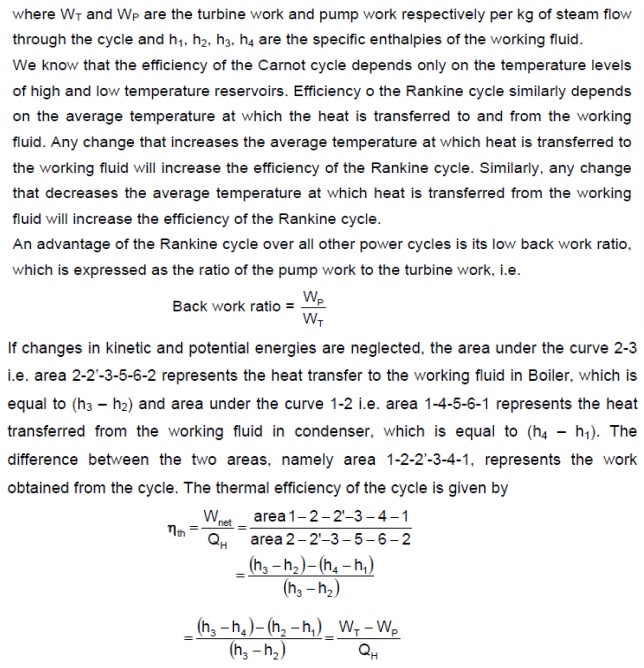
COMBINED CYCLE
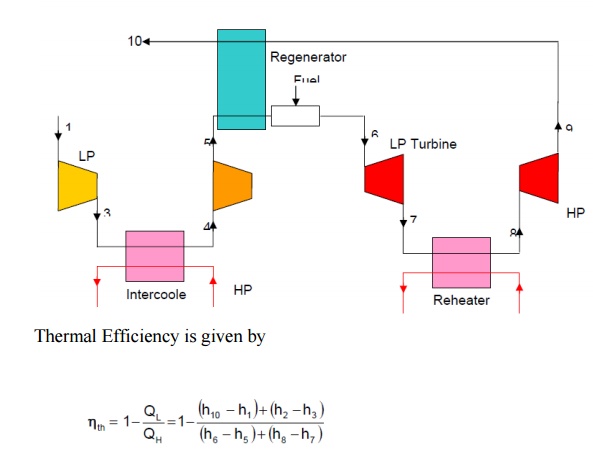
Thermal Efficiency is given as above.

OTTO CYCLE
The air standard Otto
Cycle is an idealised cycle which closely approximates the operation of Spark
Ignition (SI) Engine.
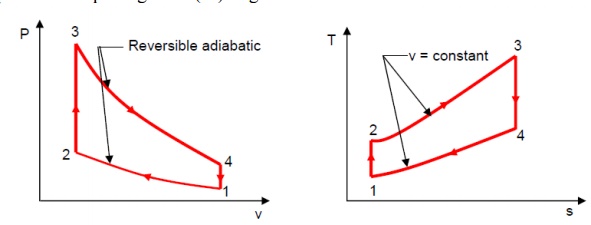
Process 1-2 is
reversible adiabatic (isentropic) compression of air when the piston moves from
crank-end dead centre (BDC) to cylinder head dead centre (TDC). During the
process 2-3, heat is transferred reversibly to the system at constant volume
(this process corresponds to the spark ignition of the actual engine). The
curve 3-4 represents the reversible adiabatic expansion process when piston
moves from TDC to BDC and the curve 4-1 represents the heat rejected by the
system reversibly at constant volume.
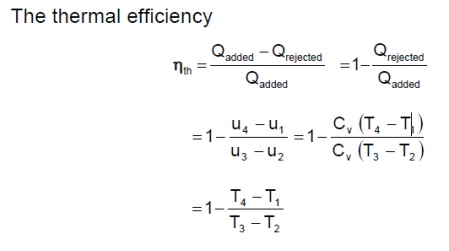
Related Topics